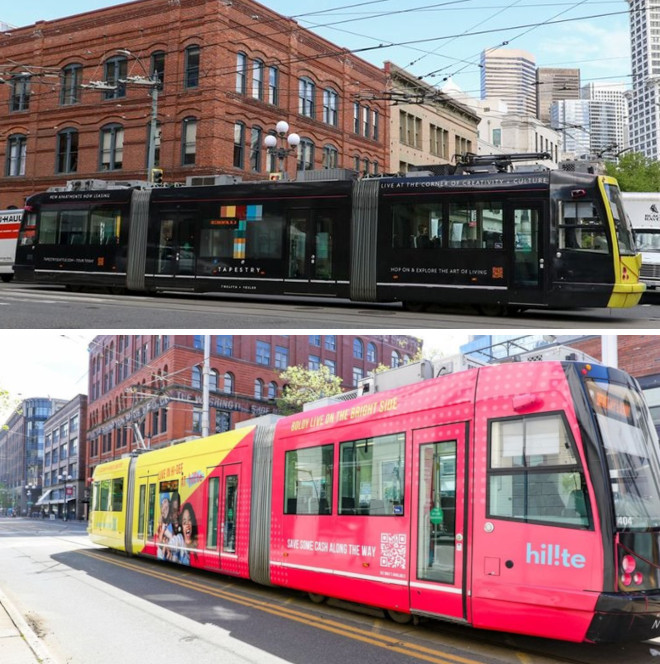Simultaneously marketing two contrasting communities in a competitive market in an emerging area.
Tapestry and Hilite
Client: Blanton Turner
Location: Seattle
Size: 268 and 206 units
Client: Blanton Turner
Location: Seattle
Size: 268 and 206 units
Simultaneously marketing two contrasting communities in a competitive market in an emerging area.
Tapestry and Hilite are contrasting apartment communities that opened within six months of each other in an emerging area of Seattle with many new competitors.
Both communities are within half a mile of each other east of downtown Seattle, where several neighborhoods come together. Tapestry is more connected to nearby retail, employment, parks, and other offerings, albeit with urban nuisance challenges at the street level. Hilite is in a much less understood location with fewer nearby amenities, despite being walkable to the Judkins Park light-rail station, which would not open until a year following Hilite’s delivery to the market.
Tapestry had been underperforming the market and its targets when Red Propeller joined the team. Hilite was just opening. Red Propeller was invited into a collaboration with property manager Blanton Turner to provide a jolt to marketing and sales performance for both communities.
Our approach leaned into the differing personalities and energies of each community.
Tapestry celebrates the richness of the many surrounding neighborhoods through curated art in a somewhat subdued, quietly confident manner. The project team engaged artists representing many of the rich cultures that have come together in the area to create integrated architectural and art installations throughout the community, including storytelling quilts, sculptures, paintings, pavement wraps, embedded steelwork, and patterned, reclaimed-timber street furniture.
Hilite is louder and more boisterous, incorporating bold primary colors. It is designed to celebrate and appeal to scrappy, crafty, creative makers who have long proliferated in the surrounding area. Most strikingly, the community features a bold multi-media creation that celebrates the interconnectedness of humanity and nature and is designed to dynamically interact with the elements, continually providing an ever-changing experience, as do the seasons and the fragility of life. Amenities include a theater area, podcasting room, and hobby locker.
Celebrating the contrast of the two communities is in keeping with our long-held view that it’s better to be polarizing (great for some and totally not for others) than bland (just OK for most). This is particularly important when competing against multiple communities (including one with the same ownership and management company) for essentially the same prospect pool. In fact, when one of the two communities wasn’t right for a prospect, team members could send them to the other. (Note: training leasing teams in how to sell the story of a distinctive community is crucial.)

Tapestry and Hilite streetcar promotion
Emblematic of this approach was our takeover of a streetcar on the First Hill line, with one side painted in bold Hilite colors and the other the more subdued hues of Tapestry (regular rotation of the streetcar ensured maximum visibility of both sides of the car to people on both sides of the route). The interior of the streetcar also contained contrasting ads for the two communities.
Team members promoted both brands at nearby events accessible from the streetcar line, including the Capitol Hill Farmers Market, Pioneer Square art walk, concerts at WAMU Theater, and games at T-Mobile Park. On-property activations, from maker fairs to art master classes, invited the public in to experience the lifestyle of each.
In addition to these branded activations, Red Propeller led a marketing assessment and optimization process to enhance engagement and lead generation quality through paid, organic, and outreach channels. Our team also spent time coaching leasing professionals on the story of each property, the value of its location, and ways to overcome common objections.
In our six months of collaboration with Blanton Turner, Tapestry went from 42 units behind its cumulative leasing goal to 12 units ahead, and from under-performing against the competition to an absorption rate 22% higher than the comps. Hilite over-performed against the competition by 7%, despite disadvantages of its location. Ownership acknowledged that Hilite’s lease-up outperformed all other new properties in their portfolio.